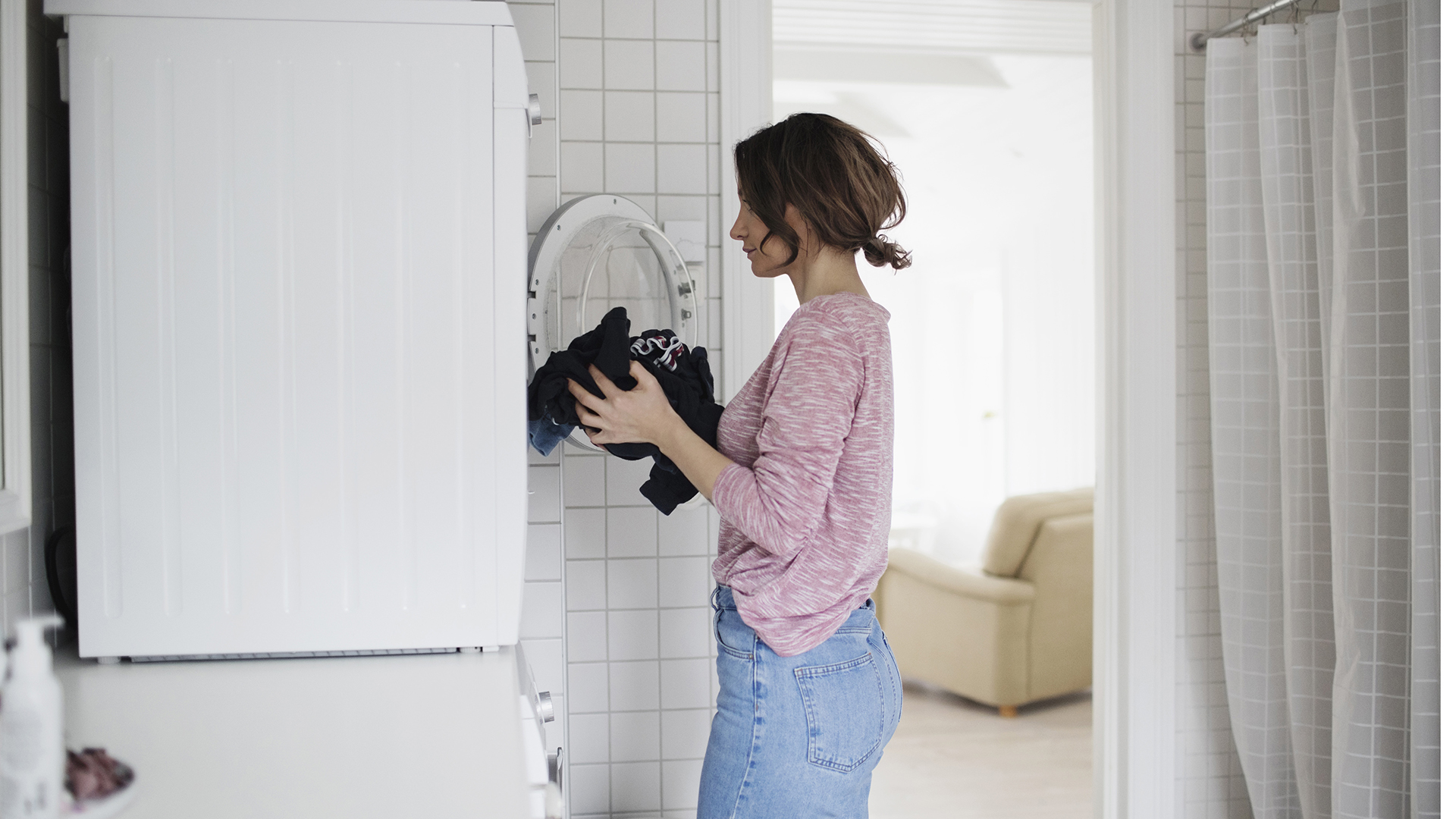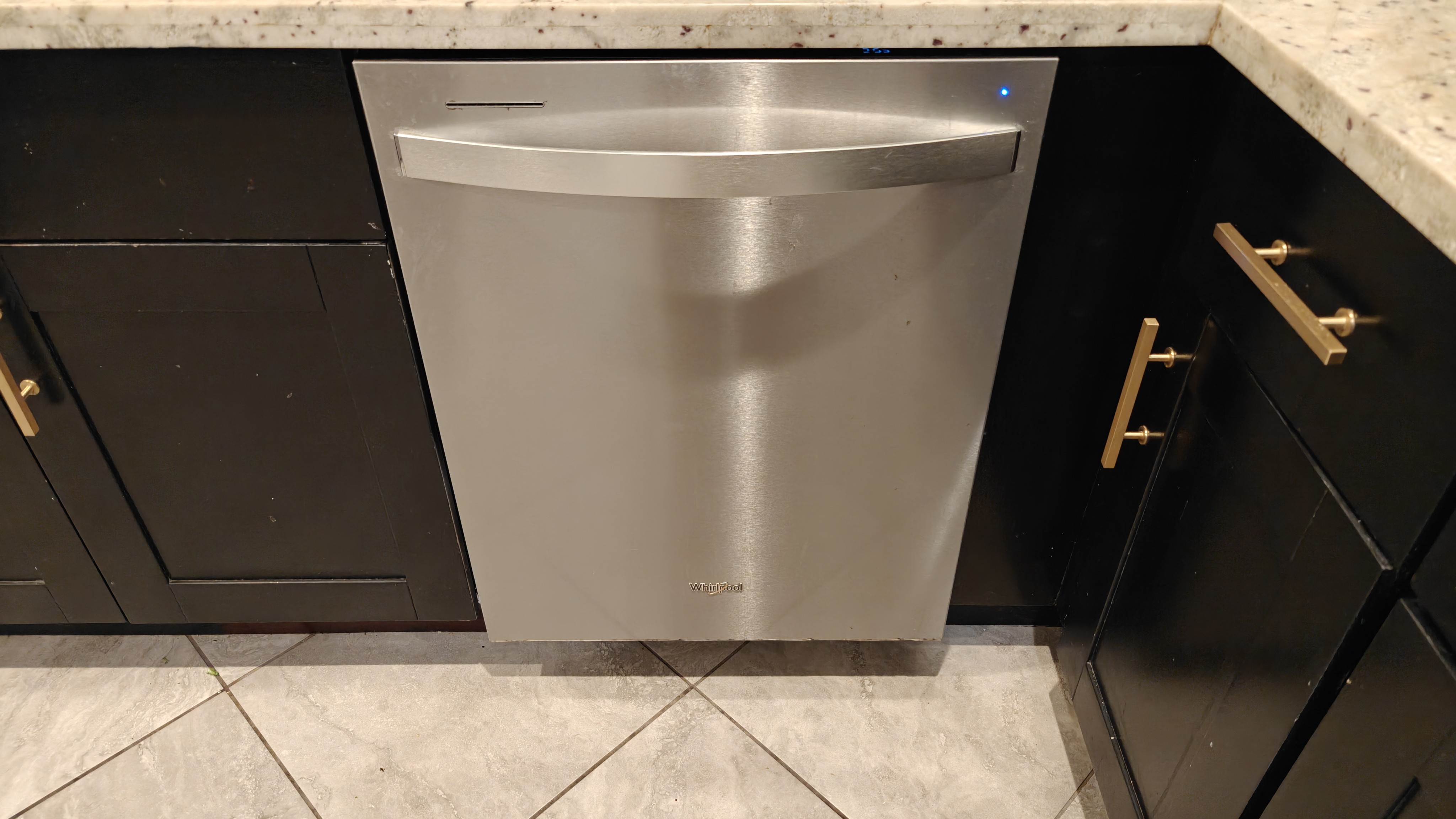What dryer settings should you use?
Here are 5 tips to help simplify your machine

Dryers are probably one of the most used appliances in your home, so it's only right that you spend some time figuring out exactly what settings work best for you. Dryers are a highly convenient and efficient way of drying laundry, especially in winter when air drying is out of the question. They can also save you plenty of time, essential for busy people with limited time for chores.
The best dryers will also make ironing your clothes more manageable, as the heat will prevent deep creases from forming. However, getting to the point where your dryer benefits your routine can sometimes be tricky. Often, many different logos and obscurely named functions can make it difficult to know precisely what dryer setting is best for you, so we've spoken to the appliance experts at Fisher & Paykel.
Whether you want to learn how to dry tennis shoes in the dryer or focus on giving the proper care to your bed linen, each garment must be washed and dried in specialized settings. So, Jo Jackson, Product Market Manager, has helped debunk each of the different dryer settings to pay attention to help you get the best out of every feature your machine offers.

Jo Jackson is the Market Product Manager at Fisher & Paykel where she focuses on bringing new and unique innovations to the UK and Ireland markets. Jo has been working within the luxury kitchens and bathrooms industry since 2015. Fisher & Paykel, New Zealand’s award-winning appliance brand, has been selling products globally to change the way people live since 1934. They believe that good design is all about making life better and making appliances do just that.
Which dryer settings should you pay attention to?
1. Heat Settings
You wouldn't be wrong to assume that a dryer works by heating your clothes, but there are a variety of heat settings that allow you to choose the exact temperature at which to dry your clothes. There are usually high, medium, and low options, but some modern models will make you more specific.
Jo Jackson, Market Product Manager at Fisher & Paykel, said, "High heat is generally advised for use on cotton and other heavy fabrics, while low heat is ideal for delicate fabrics such as silk or wool. Medium heat is a good option for most clothing types, including synthetics and blends."
2. Time Settings
Sign up to receive the latest news, reviews, buying guides and deals direct to your inbox
Another great feature of many modern dryers is a time setting. Sometimes, the shirt you need for work might still be damp, so all you want is a quick blast in the dryer to make it ready to wear.
Jo also noted that it's important to remember that "it may seem counterintuitive to choose a longer time setting when trying to reduce drying time, but not every fabric can handle high heat, meaning low and slow is preferable."
3. Dryness Level Autosensing
Some dryers have a built-in sensor that detects when the load has reached the desired dryness level, alerting the user and shutting off the machine. It's always important to check the manufacturer's instructions to ensure you're using the sensor dry setting correctly, but once you have, it's a great way to save energy and prevent damage to your clothes by over-drying.
4. Steam Refresh
You might want to sell clothes on a resale platform or even refresh items bought in a thrift store - in either, steam refresh settings are handy. This setting will deodorize and de-wrinkle clothes, so you don't need to wash them in a complete wash.
Buying Guides
Best washer dryer combos 2025: all-in-one solutions for your laundry needs, chosen by experts
Best hair dryers: Top-rated blow dryers for all budgets
Reviews
LG DLEX8600BE 7.3 Cu. Ft. Smart Electric Dryer review: over 24 high-tech drying programs
Asko T411VDW 5.1 cu. ft. Stackable Electric Dryer review: ideal for lighter loads
Revlon Perfect Heat Fast Dry Travel Styler review
This is great for reducing energy consumption and the time you spend on large loads of washing, as most clothes simply don't need to be washed frequently. These cycles are usually only 20 minutes long, too, so they're great if you're in a rush.
5. Cool Air Settings
Cool air settings are much better for your energy bills (and the planet) and benefit your delicate garments. This setting is ideal for clothing that might shrink in high heat, such as dresses or knitwear.
Tips for using dryer settings correctly
• Always check your clothes' washing care labels before putting them in the dryer. Avoid drying wool, linen, or silk, as this could damage them.
• Don't overload the dryer. Overloading can reduce the effectiveness of the settings and damage the machine.
• Learn how to clean a lint dryer trap to ensure proper airflow and prevent fire hazards.

Holly, the former Features Editor of Top Ten Reviews, brings a wealth of experience in creating practical home content. With a background in freelance writing and product copy, she is dedicated to producing thorough features that help readers make the most of their homes and gardens.
